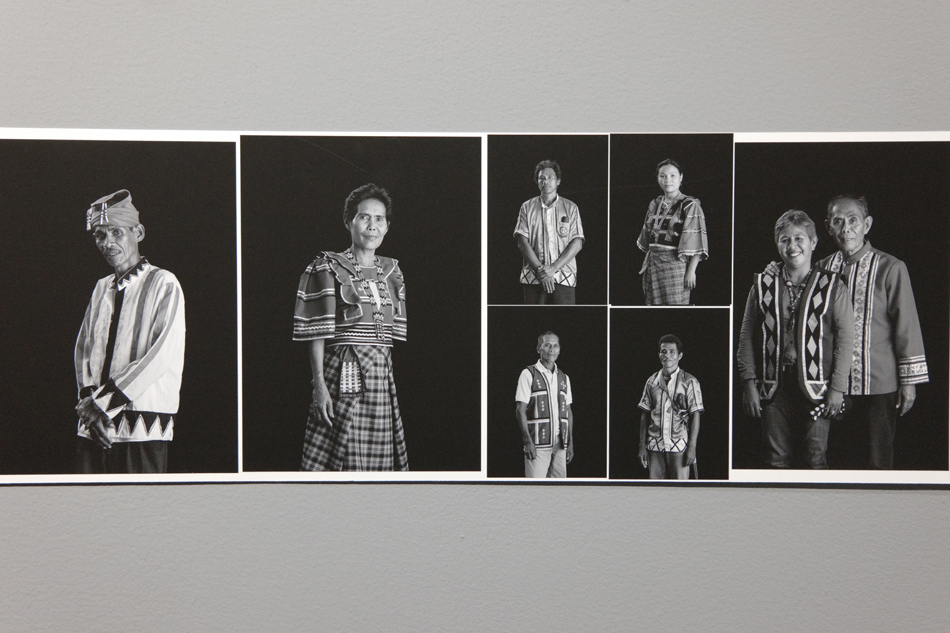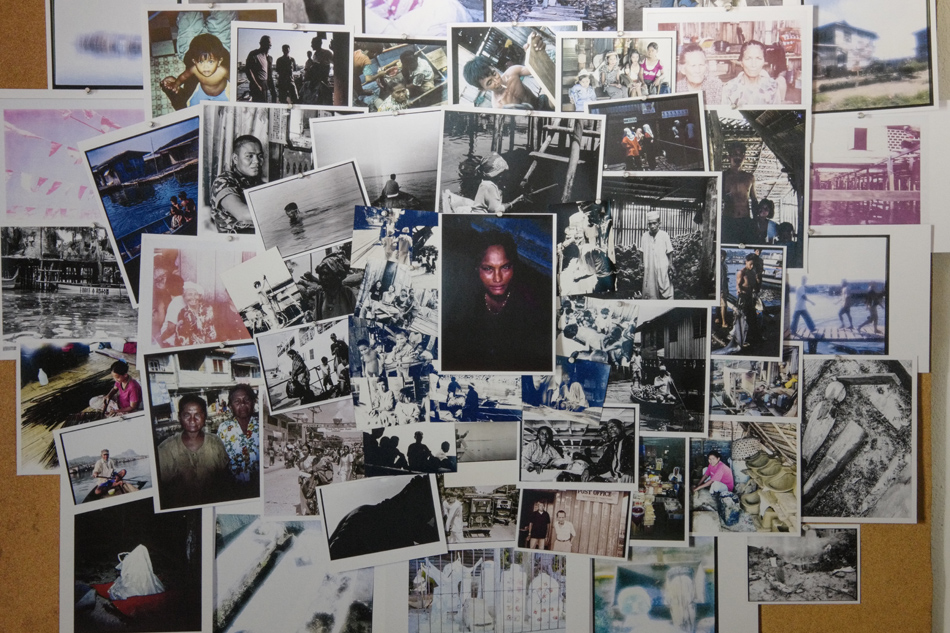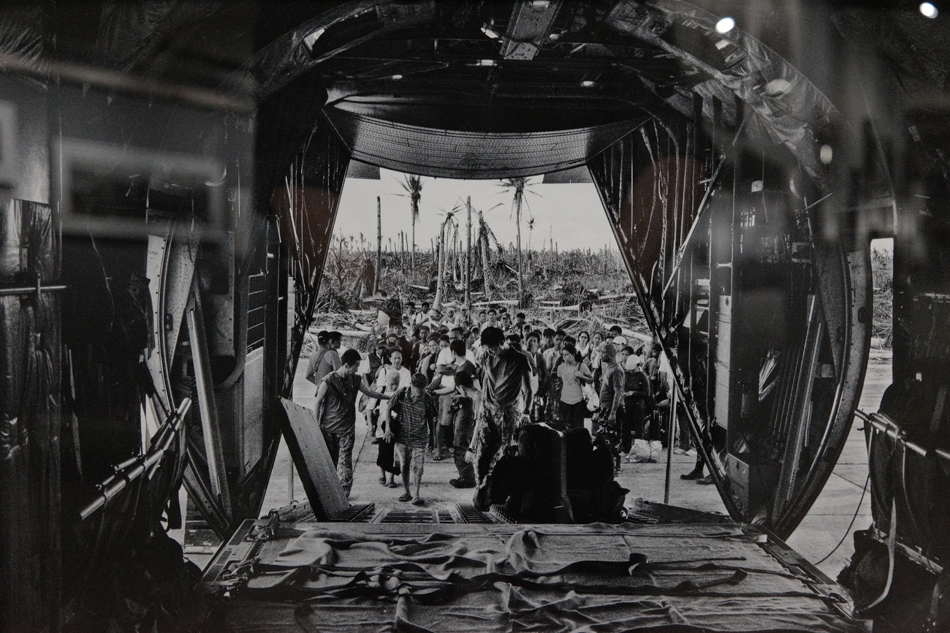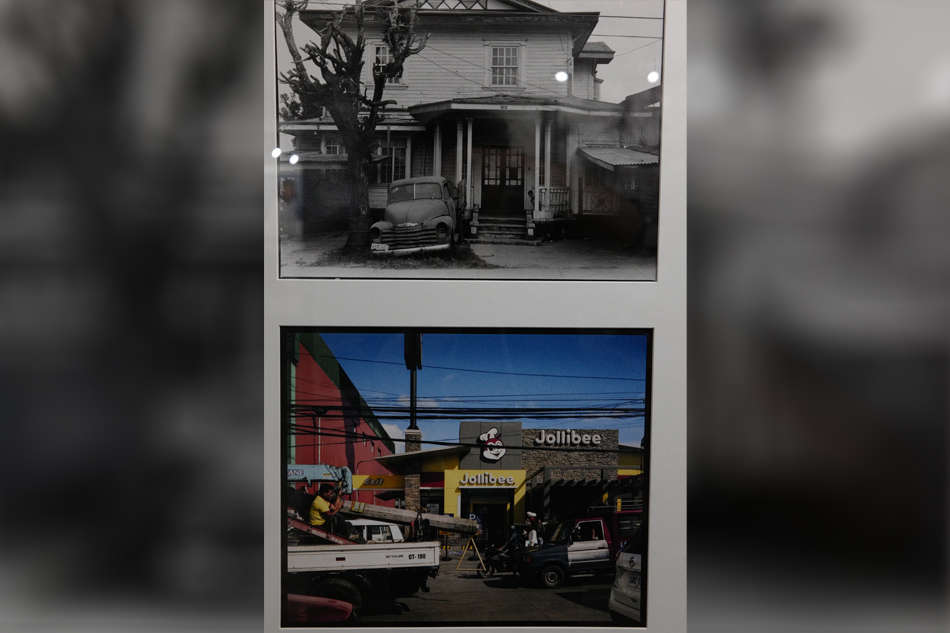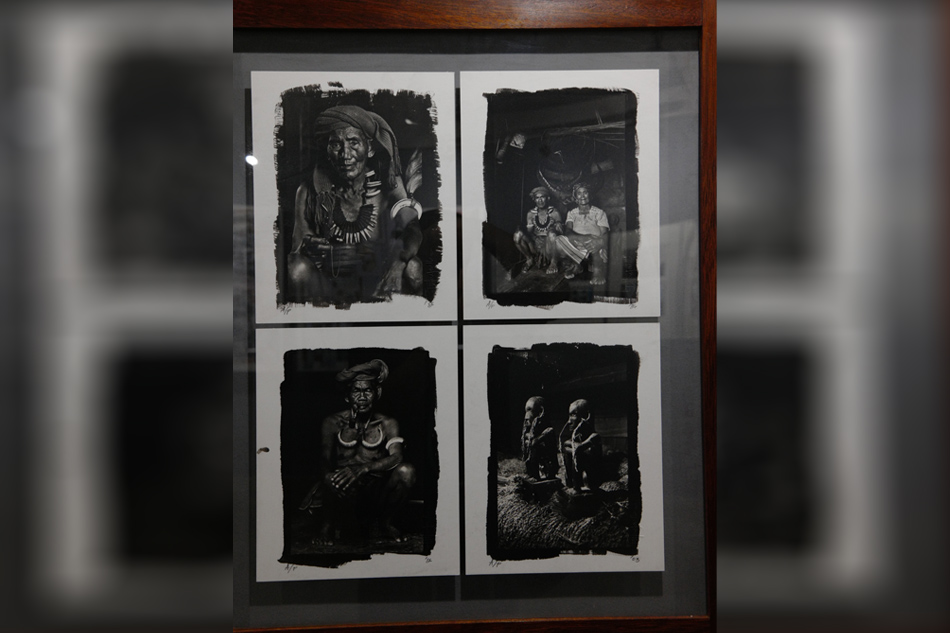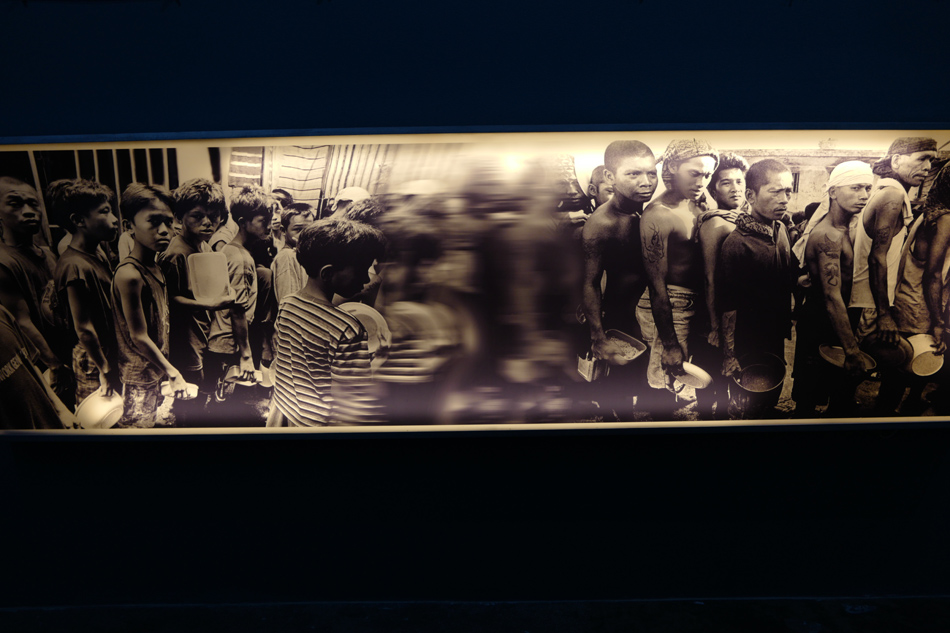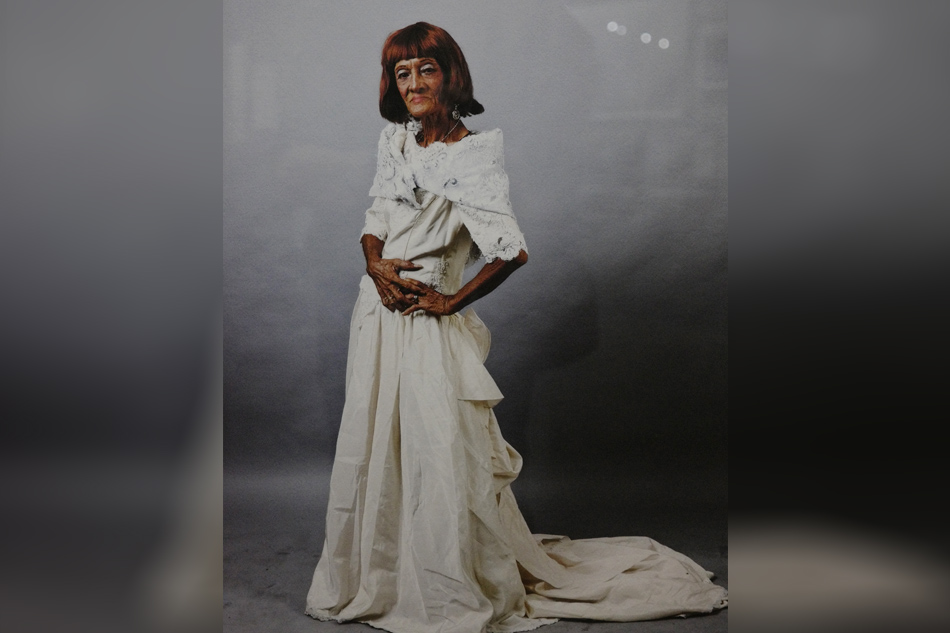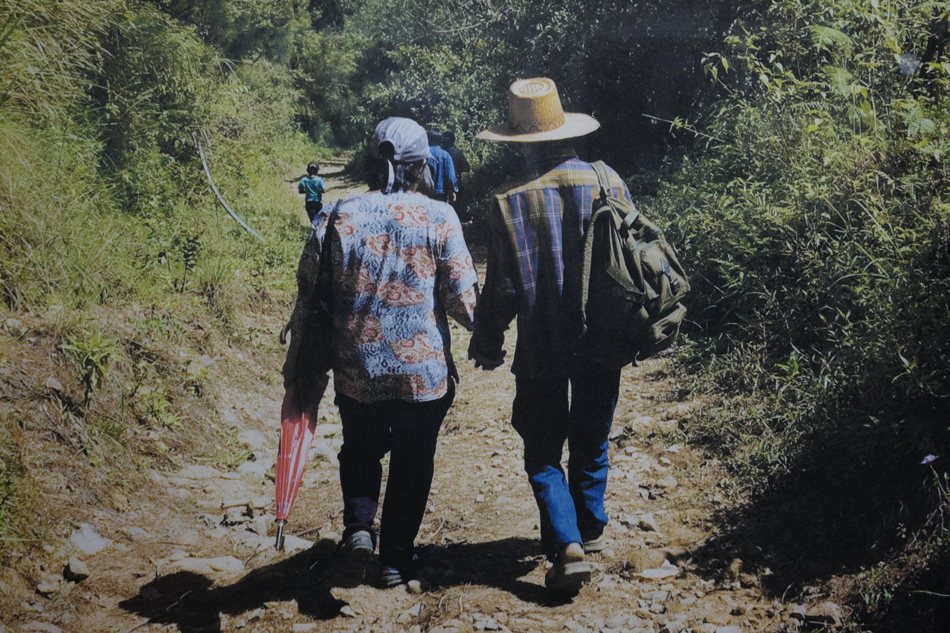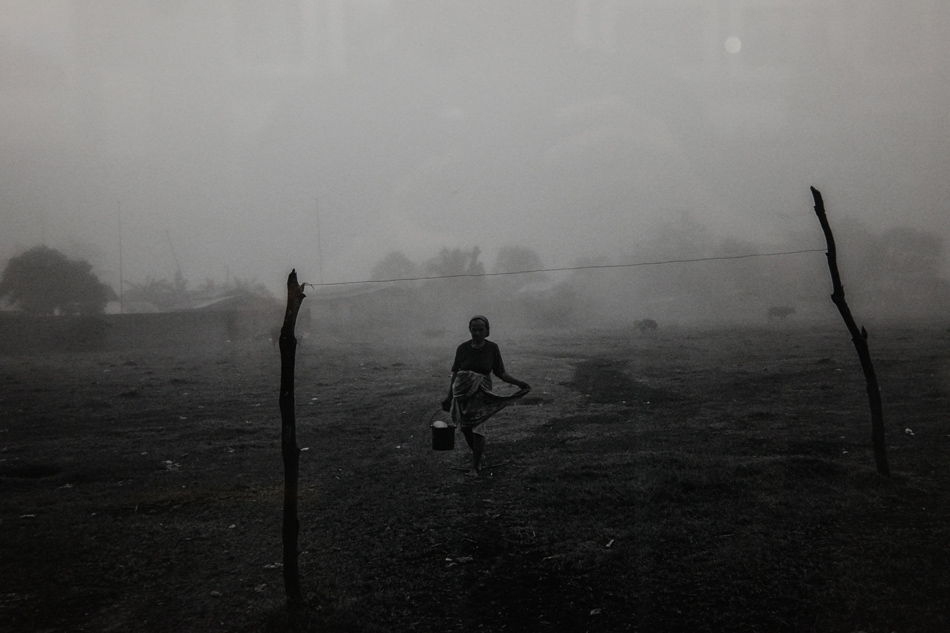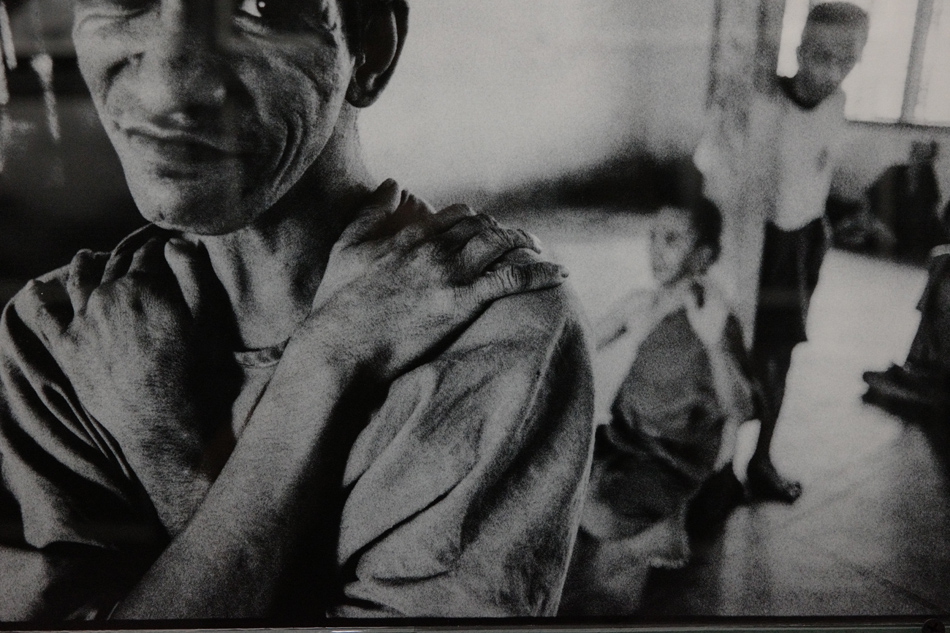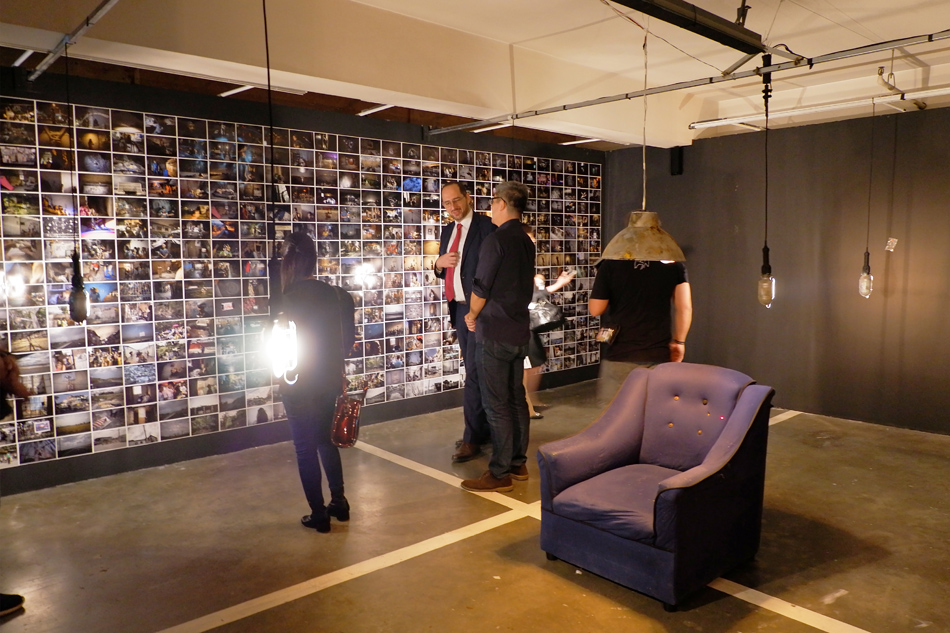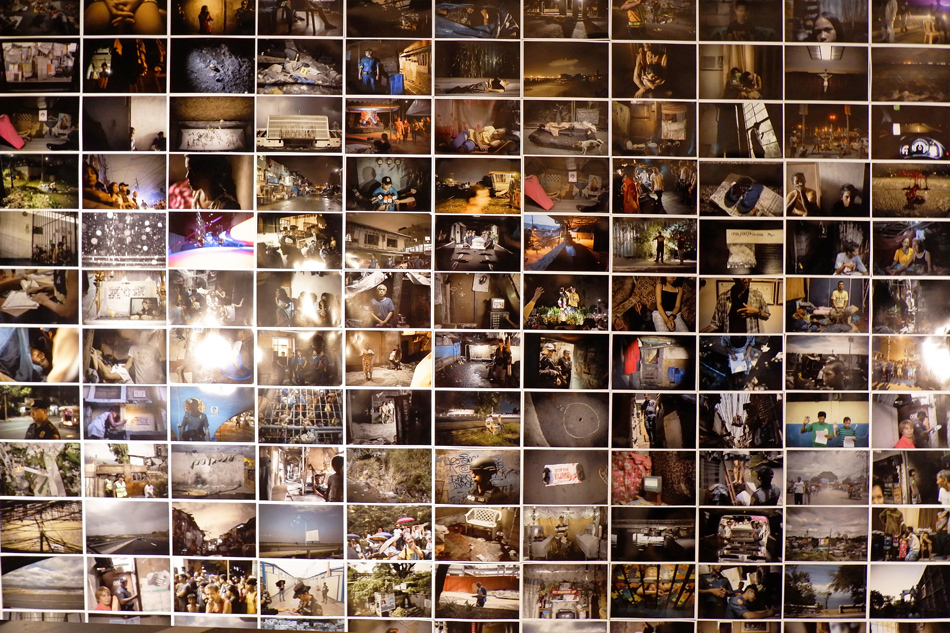Photography is just the shot the Art Fair needed | ABS-CBN
ADVERTISEMENT

Welcome, Kapamilya! We use cookies to improve your browsing experience. Continuing to use this site means you agree to our use of cookies. Tell me more!
Photography is just the shot the Art Fair needed
Photography is just the shot the Art Fair needed
Jerome Gomez,
ANC-X
Published Mar 01, 2018 05:40 PM PHT
|
Updated Mar 01, 2018 11:06 PM PHT
MANILA -- A man in a business suit, wine glass in hand, sits down on a blue one-seater couch at the center of the room. His face is lit by a hanging lamp just a few inches above his head. He never fully eases into the chair but leans to his right to listen to Erwin Romulo, the curator, tell the story behind the chair, the lamp, the red dot of light touching the man’s chest pocket, and the projected image of a girl across him.
MANILA -- A man in a business suit, wine glass in hand, sits down on a blue one-seater couch at the center of the room. His face is lit by a hanging lamp just a few inches above his head. He never fully eases into the chair but leans to his right to listen to Erwin Romulo, the curator, tell the story behind the chair, the lamp, the red dot of light touching the man’s chest pocket, and the projected image of a girl across him.
The man is a guest during last Tuesday’s Art Fair vernissage, a day allotted for collectors and other business and society VIPs. The girl is Christine, 12. The voice coming from the lamp is hers, relating the story of how one December morning in 2016, in her family’s home in Payatas, she watched her father get shot by policemen in the very couch the suited man is sitting on. Shot through the back of his head and, yes, through his chest.
The man is a guest during last Tuesday’s Art Fair vernissage, a day allotted for collectors and other business and society VIPs. The girl is Christine, 12. The voice coming from the lamp is hers, relating the story of how one December morning in 2016, in her family’s home in Payatas, she watched her father get shot by policemen in the very couch the suited man is sitting on. Shot through the back of his head and, yes, through his chest.
There are a million things to turn one’s gaze at in this sixth edition of Art Fair Philippines. Or as Nilo Ilarde’s installation title puts it, “The Art Fair is full of objects, more or less interesting.”
There are a million things to turn one’s gaze at in this sixth edition of Art Fair Philippines. Or as Nilo Ilarde’s installation title puts it, “The Art Fair is full of objects, more or less interesting.”
There’s Marina Cruz’s paintings of old dresses, resplendent in its color and hyper-realism; the accuracy of its depiction of a cotton bias tape, with its edges left to fray, masterful.
There’s Marina Cruz’s paintings of old dresses, resplendent in its color and hyper-realism; the accuracy of its depiction of a cotton bias tape, with its edges left to fray, masterful.
ADVERTISEMENT
Top collector Paulino Que is seen spending an inordinately long time considering a painting by Anthony Palomo at the Boston Gallery booth. The work, whimsical in spirit, shows a man in stylized Filipino garb holding a violin, possibly off to a harana.
Top collector Paulino Que is seen spending an inordinately long time considering a painting by Anthony Palomo at the Boston Gallery booth. The work, whimsical in spirit, shows a man in stylized Filipino garb holding a violin, possibly off to a harana.
And then there’s Ilarde’s work, already a hit on Instagram: 24,124 collectible toy cars filling the entire floor area of a booth. “Do these die-cast cars similarly tell of our inexhaustible compulsion to collect?” its caption asks.
And then there’s Ilarde’s work, already a hit on Instagram: 24,124 collectible toy cars filling the entire floor area of a booth. “Do these die-cast cars similarly tell of our inexhaustible compulsion to collect?” its caption asks.
SPOTLIGHT ON PHOTOGRAPHY
But it’s that couch that people are talking about. That immersive piece inside a black-clothed cube called "Ang Mga Walang Pangalan," a title lifted from a poem by Jose F. Lacaba. The entire show—involving lighting design by Lyle Sacris, sound by Mark Laccay, and score by Juan Miguel Sobrepeña—takes off from a series of photographs by Carlo Gabuco which won the documentary journalist a Magnum Foundation grant last year.
But it’s that couch that people are talking about. That immersive piece inside a black-clothed cube called "Ang Mga Walang Pangalan," a title lifted from a poem by Jose F. Lacaba. The entire show—involving lighting design by Lyle Sacris, sound by Mark Laccay, and score by Juan Miguel Sobrepeña—takes off from a series of photographs by Carlo Gabuco which won the documentary journalist a Magnum Foundation grant last year.
The series is part of Rappler’s reportage on impunity and the government’s war on drugs which Gabuco has been covering since the early days of the Duterte administration. "Ang Mga Walang Pangalan" picks up on a photograph of the orphaned Christine, sitting on the couch in their home in Payatas village, and sort of takes the image apart, augmented-reality style. On the right wall of the room is Gabuco’s gloomy painting of the couch itself; across it, an entire wall of the photographer’s prints from covering the nightshift. A few steps behind the couch, the bullet Christine’s brother dug from the back of the chair is in a ziplock bag, pinned on the wall.
The series is part of Rappler’s reportage on impunity and the government’s war on drugs which Gabuco has been covering since the early days of the Duterte administration. "Ang Mga Walang Pangalan" picks up on a photograph of the orphaned Christine, sitting on the couch in their home in Payatas village, and sort of takes the image apart, augmented-reality style. On the right wall of the room is Gabuco’s gloomy painting of the couch itself; across it, an entire wall of the photographer’s prints from covering the nightshift. A few steps behind the couch, the bullet Christine’s brother dug from the back of the chair is in a ziplock bag, pinned on the wall.
The installation work is part of the Art Fair’s first time to put a spotlight on photography, and the gesture is full-on. There’s an entire collection of Masferre photographs that sold out on the day of the vernissage.
The installation work is part of the Art Fair’s first time to put a spotlight on photography, and the gesture is full-on. There’s an entire collection of Masferre photographs that sold out on the day of the vernissage.
Neal Oshima, a giant in the field, has his own section dedicated to his work on indigenous Southeast Asian tribes, with particular interest in the B’laan, an ethnic group of Southern Mindanao. Together with curator Angel Shaw, Oshima put together a group show called Provocations featuring documentary work from some of the best in the field. Each photographer gets to show an abbreviated collection from a narrative they have worked on.
Neal Oshima, a giant in the field, has his own section dedicated to his work on indigenous Southeast Asian tribes, with particular interest in the B’laan, an ethnic group of Southern Mindanao. Together with curator Angel Shaw, Oshima put together a group show called Provocations featuring documentary work from some of the best in the field. Each photographer gets to show an abbreviated collection from a narrative they have worked on.
There’s Jose Enrique Soriano’s haunting exploration of life in one of Manila’s mental institutions. There’s Jes Aznar painting the ravages of conflict in his pictures of Mindanao.
There’s Jose Enrique Soriano’s haunting exploration of life in one of Manila’s mental institutions. There’s Jes Aznar painting the ravages of conflict in his pictures of Mindanao.
Sometimes a single photograph is enough to conjure an entire story. Like Nana Buxani’s image of young boys in prison lining up for a meal. Or Veejay Villafranca’s picture of a flock of evacuees walking towards an aircraft that would transport them out of Eastern Samar after Haiyan. As they enter an unknown future, a tumble of naked and fallen trees is seen from behind, like the shadow of a devastating period not even past.
Sometimes a single photograph is enough to conjure an entire story. Like Nana Buxani’s image of young boys in prison lining up for a meal. Or Veejay Villafranca’s picture of a flock of evacuees walking towards an aircraft that would transport them out of Eastern Samar after Haiyan. As they enter an unknown future, a tumble of naked and fallen trees is seen from behind, like the shadow of a devastating period not even past.
COLLECTION OF WORK
Other times, it’s the collection of work. Geloy Concepcion’s elegant studio portraits of senior gay men reliving the years when they were younger queens was enough to bring one of the first day visitors to tears.
Other times, it’s the collection of work. Geloy Concepcion’s elegant studio portraits of senior gay men reliving the years when they were younger queens was enough to bring one of the first day visitors to tears.
And then there’s Kat Palasi’s “Homecoming: A Benguet-Ibaloy Story,” a group of exceptionally textured and moving photographs recounting an old man’s return to Benguet to bury his older brother.
And then there’s Kat Palasi’s “Homecoming: A Benguet-Ibaloy Story,” a group of exceptionally textured and moving photographs recounting an old man’s return to Benguet to bury his older brother.
"Photography can cut through abstractions and rhetoric to help us understand complex issues on a human level,” said the lensman James Nachtwey in Time recently, talking about his latest work on America’s opioid epidemic. “Never is photography more essential than in moments of crisis.”
"Photography can cut through abstractions and rhetoric to help us understand complex issues on a human level,” said the lensman James Nachtwey in Time recently, talking about his latest work on America’s opioid epidemic. “Never is photography more essential than in moments of crisis.”
There are times in the yearly Art Fair when if you stand in one spot and you look long enough—like looking at Nilo Ilarde’s collection of cars perhaps—the entire place can appear like a collage of paintings blending into each other, a cold marketplace for art, a pretty backdrop for Instagrammers.
There are times in the yearly Art Fair when if you stand in one spot and you look long enough—like looking at Nilo Ilarde’s collection of cars perhaps—the entire place can appear like a collage of paintings blending into each other, a cold marketplace for art, a pretty backdrop for Instagrammers.
But this year’s edition is different—no small thanks to its effort to shine the light on documentary photography, which did not only anchor Art Fair Philippines to the present, but to its country and its country’s realities.
But this year’s edition is different—no small thanks to its effort to shine the light on documentary photography, which did not only anchor Art Fair Philippines to the present, but to its country and its country’s realities.
ADVERTISEMENT
ADVERTISEMENT


